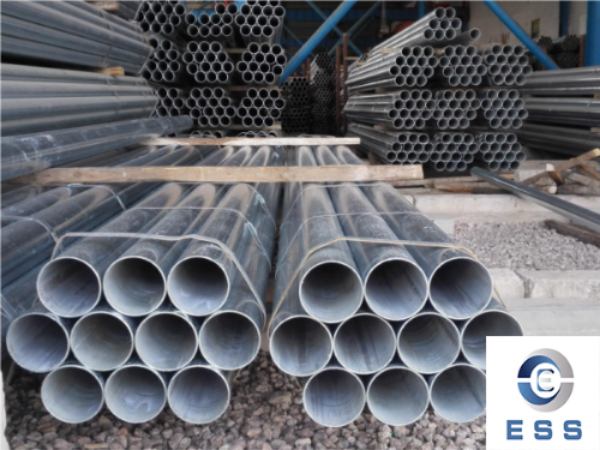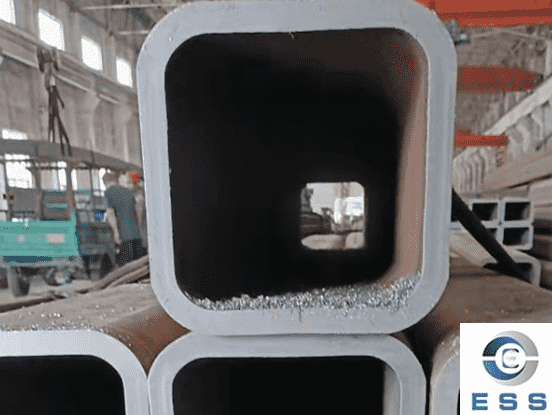Why do seamless galvanized pipes suffer from plating leakage?
Galvanized steel pipes are divided into cold-dip galvanized steel pipes and hot-dip galvanized steel pipes. Cold-dip galvanized steel pipes have been banned, and the latter is also recommended by the country to be temporarily used. In the 1960s and 1970s, developed countries in the world began to develop new pipes and gradually banned galvanized pipes. China's Ministry of Construction and four other ministries and commissions have also issued documents clarifying that galvanized pipes will be banned as water supply pipes starting in 2000. Galvanized pipes are rarely used in cold water pipes in newly built communities, and hot water pipes in some communities use galvanized pipes. Hot-dip galvanized steel pipes are widely used in fire protection, electric power and highways.

Hot-dip galvanized steel pipes are widely used in construction, machinery, coal mines, chemical industry, electric power, railway vehicles, automobile industry, highways, bridges, containers, sports facilities, agricultural machinery, petroleum machinery, prospecting machinery, greenhouse construction and other manufacturing industries.
Galvanized steel pipe is a welded steel pipe with a hot-dip or electroplated zinc layer on the surface. Galvanizing can increase the corrosion resistance of steel pipes and extend their service life. Galvanized pipes are widely used. In addition to being used as pipeline pipes for general low-pressure fluids such as water, gas, and oil, they are also used as oil well pipes and oil pipelines in the petroleum industry, especially offshore oil fields, and as oil heaters and condensators in chemical coking equipment. Pipes for coolers, coal distillate wash oil exchangers, pipes for trestle pipe piles, and support frames for mine tunnels, etc.
Why do galvanized pipes suffer from plating leakage?
1. Because there is grease on the outer wall of the base pipe, the grease on the steel pipe wall will increase the surface tension. The pickling step before galvanizing cannot remove the surface grease. The base pipe rusted, and sometimes the plating agent failed to adhere, and a protective salt mold formed. In the high-temperature molten zinc pool, the steel pipe rapidly oxidizes, so the zinc liquid will not have any chemical or physical reaction with the matrix. After the steel pipe comes out of the zinc liquid pool, under the influence of gravity, the zinc liquid will flow and accumulate unevenly, so there will still be black putty in the thin zinc layer.
2. The outer surface of the alloy-based pipe has been severely corroded. Even if the surface of the steel pipe cannot be cleaned, iron oxide still remains. Although the auxiliary plating agent can adhere to it, when the base pipe is immersed in the molten zinc liquid, the zinc liquid cannot directly contact the steel wire and no reaction will occur. After the steel pipe is separated from the zinc liquid pool, the exposed side is relatively clean, so the surface of the galvanized greenhouse pipe will be pitted.
3. There is thick grease and difficult-to-remove stains on the wall of the base pipe, so missed plating will inevitably occur, and the processing will be very inconvenient because the steel pipe needs to be cleaned from beginning to end. There are stains on the wall of the base pipe that are the same shape as mung beans. During baking, the zinc liquid at the mouth of the steel pipe will adhere tightly to the surface of the steel pipe. Like rusty steel pipes. All leakage plating is the same, but the leakage in this case is smaller and continuous, and the edges are relatively smoother.
4. There are scars on the wall of the base pipe and the appearance is rough. It is obvious that the stain will get inside the scratch. This type of dirt is difficult to remove with the pickling and alkaline cleaning steps prior to galvanizing. The missing plating defects are long and thin. This kind of leakage plating is very rare.
5. If the temperature does not meet the requirements during the galvanizing process, the galvanized greenhouse pipe is prone to leakage.













 Eastern Steel Manufacturing Co.,Ltd not only improve product production and sales services, but also provide additional value-added services. As long as you need, we can complete your specific needs together.
Eastern Steel Manufacturing Co.,Ltd not only improve product production and sales services, but also provide additional value-added services. As long as you need, we can complete your specific needs together.










